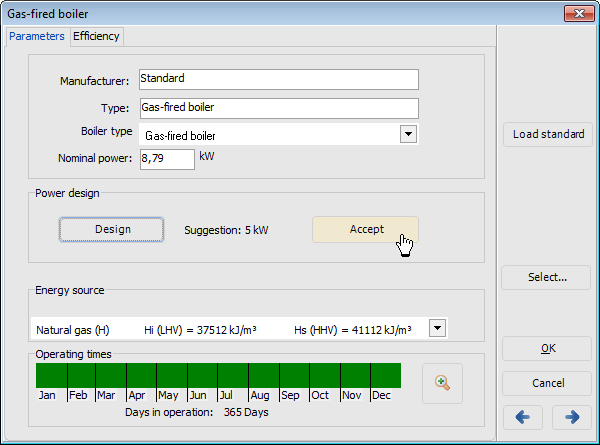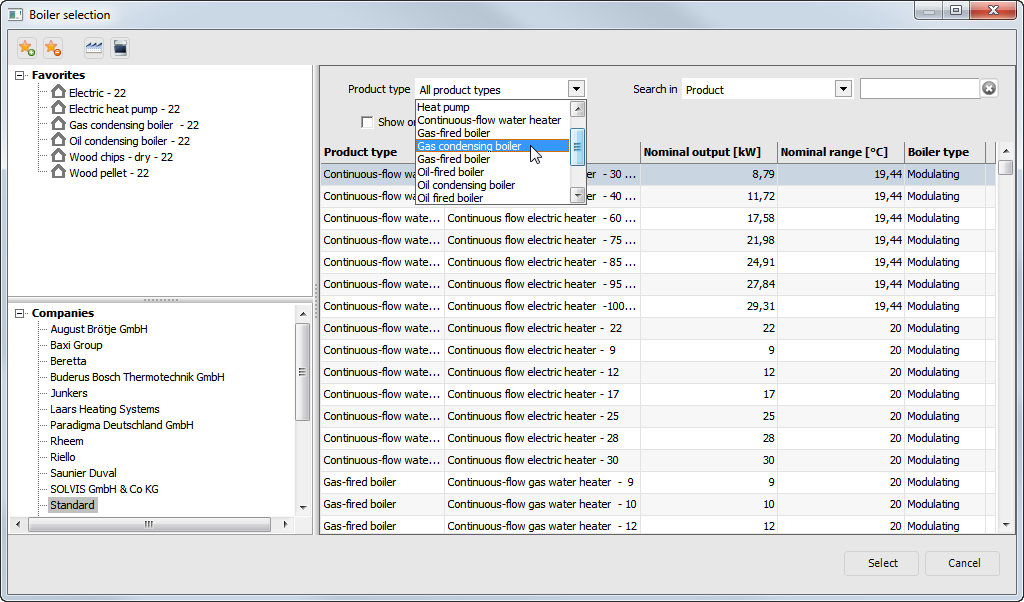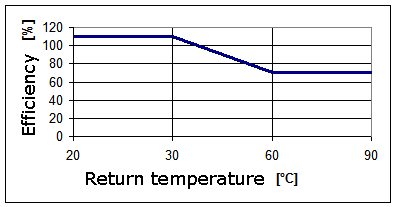Variant Menu: System Definition > Gas Boiler > Parameters or system schematic
This section deals with configuring auxiliary heating systems. Here’s an overview:
Input dialog for auxiliary heating
Auxiliary Heating Purpose: The auxiliary heating system serves the following purposes:
- Maintaining the target tank temperature set in the tank dialog when solar irradiation is insufficient.
- Supplying heating loops in systems with space heating.
Configuration Steps:
- Open the auxiliary heating by clicking Select.
Dialog for boiler selection
-
Select one of the auxiliary heating system types:
- Heat pump
- Continuous-flow water heater
- Gas-fired boiler
- Gas condensing boiler
- Gas-fired boiler (small)
- Oil boiler
- Oil condensing boiler
- Oil-fired boiler (small)
- Wood-fired boiler
- Solid fuel boiler
- Pellet-fired boiler
- District heating
- Combined heat and power station (CHP)
-
Choose an auxiliary heating system from the list on the right side.
-
Confirm the selection by clicking Select. Alternatively, you can load a standard auxiliary heat source for simulation by clicking on Load standard. The standard rated output is the same for any given type of system.
-
You can modify parameters for the selected auxiliary heating system, and these changes apply only to the current variant.
-
Set the Operating Times of the boiler. Click on the month fields to set the operation for entire months (green area indicates the boiler is in operation). You can access an annual view by clicking on the magnifier icon, where you can switch individual days on and off.
-
Save all entries by clicking OK or proceed to the next parameter dialog using the arrow buttons.
Efficiency:
Variant Menu: System Definition, e.g., System Definition > Gas Boiler > Efficiency
Definition of efficiency curve in relation to the return temperature
On the Efficiency page, you can set the Heating Efficiency for heating using two variables, depending on the return temperature. The efficiency calculation can use either the lower heating value Hu (LHV) or the higher heating value Ho (HHV), with the other value displayed. You should define whether calculations should be made in relation to the higher or lower heating value for this system and all new projects.
Note: For outside temperatures above 14°C and without heating, the fixed efficiency for DHW supply is used for calculation.
Also see: Components
This information allows you to configure auxiliary heating systems and understand how to set their efficiency based on return temperature.
For detailed parameter values and specific data inputs, please refer to the complete documentation.


